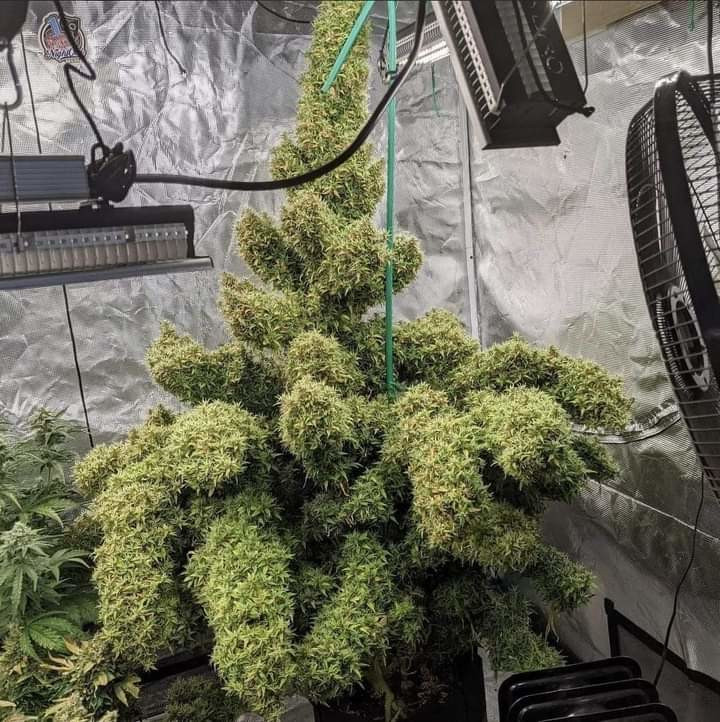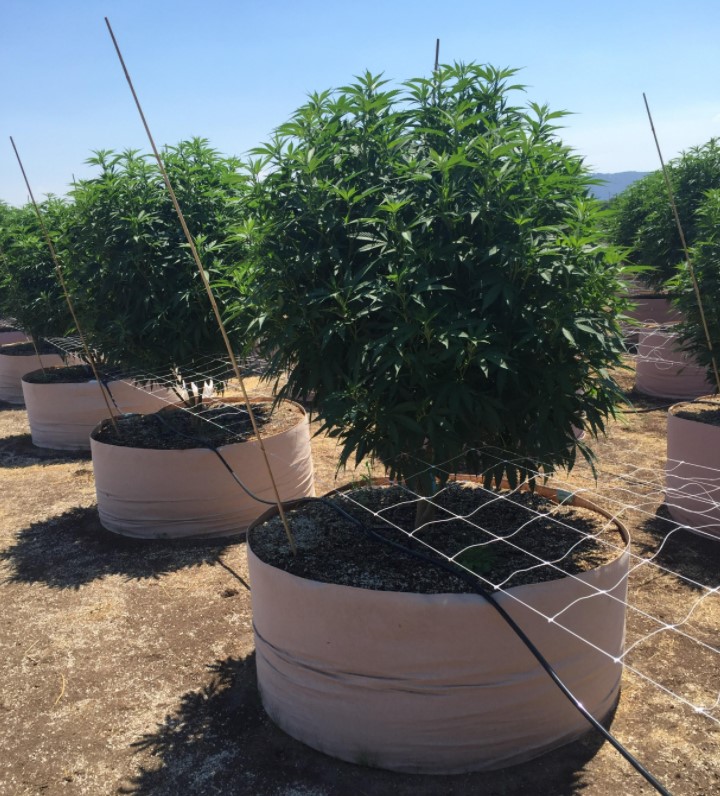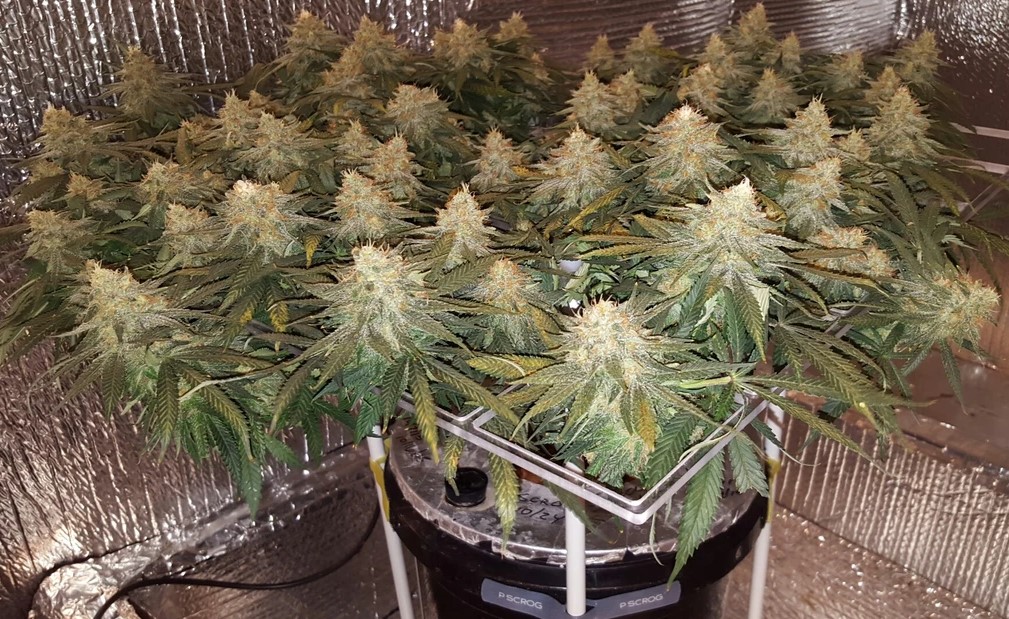As a cannabis grower, you have two primary objectives: cultivating high-quality plants and achieving maximum yield. However, determining how much weed a single plant can produce is a complex question with numerous variables at play. Understanding these factors is essential to optimize your harvest. In this comprehensive guide, we’ll explore the key elements that impact cannabis yield and provide valuable insights to help you unlock the full potential of your plants.
Cannabis Yield: A Balancing Act
The yield potential of a marijuana plant varies significantly due to a multitude of factors. Before delving into the details, let’s establish some approximate numbers to give you a general idea of what you can expect. Please note that these figures should be considered as rough estimates, as we will discuss the variables that influence them in detail later.
Here are average yield ranges based on different setups:
| Grow Setup | Lighting | Average Yield |
|---|---|---|
| 3.5 x 1.5 x 6.5ft (1 x 0.5 x 2m) grow box | 250W HPS lights | ~5-9oz (150-250g) |
| 3.5 x 1.5 x 6.5ft (1 x 0.5 x 2m) grow box | 400W HPS lights | ~9-14oz (250-400g) |
| 4 x 4 x 8ft (1.2 x 1.2 x 2.5m) grow box | 600W HPS lights | ~10-21oz (300-600g) |
| 5 x 5 x 8ft (1.5 x 1.5 x 2.5m) grow box | 1000W lights | ~18-36oz (500-1000g) |
These figures represent the upper limits achievable under nearly ideal conditions, with the right genetics, and in the hands of experienced growers. For beginners, it is advisable to focus on the lower end of the yield range when estimating your future harvest. However, keep in mind that cannabis plants can be unpredictable, and even novice growers may be pleasantly surprised by their yield.
Factors Influencing Yield: An In-Depth Analysis
The amount of weed a plant can produce depends on various factors, making it challenging to establish a definitive rule. Environmental conditions, growing techniques, genetics, and the grower’s skills all play significant roles in determining the final yield. Let’s break down the key variables that can affect your cannabis harvest.
- Indoor vs. Outdoor Cultivation
Choosing between indoor and outdoor cultivation is one of the first decisions you’ll face. Each approach offers distinct advantages.
Indoor cultivation allows for greater control over environmental factors such as temperature and humidity. This control enables indoor growers to optimize conditions and achieve higher marijuana yields per plant.
Outdoor cultivation harnesses the power of the sun, which can have a substantial impact on yield. However, it’s important to note that outdoor grows are susceptible to weather changes, temperature fluctuations, precipitation, and pest infestations, all of which can adversely affect cannabis yield.
- Growing Medium
The choice of growing medium can significantly influence the amount of weed a plant produces. There are two main types to consider: soil and hydroponics.
Soil-based growing is relatively straightforward, with plants rooted in traditional dirt. This medium offers more forgiveness when it comes to potential issues. However, soil-based setups tend to yield lower quantities compared to hydroponic systems.
Hydroponic cultivation involves growing plants in a water-based medium. While it is less forgiving than soil cultivation, hydroponics can lead to higher yields. However, it requires meticulous attention to factors such as temperature, pH levels, and total dissolved solids (TDS) to ensure optimal growth. With proper care and monitoring, hydroponic systems have the potential to increase yields by up to 20% compared to soil-based setups.
- Nutrient Management
Nutrients play a crucial role in determining the yield of cannabis plants. There are three primary macronutrients that marijuana plants require: nitrogen, phosphorus, and potassium.
Nitrogen is essential during the early stages of plant growth and promotes stem development. Phosphorus and potassium are crucial in the later stages, influencing the number, size, weight, and density of flowers. Understanding how these nutrients affect plant growth is vital for maximizing yield.
By providing the appropriate nutrients at each stage of growth, you can optimize plant health and maximize the potential yield.
- Lighting Optimization
Lighting is a critical factor that can significantly impact the weight of your cannabis plants. The type and wattage of light used can make a substantial difference in growth outcomes.
Different lighting options yield varying results. For instance, LEDs (light-emitting diodes), a popular choice among growers, produce approximately 0.5-0.75 grams (0.017-0.025 ounces) per watt of power. On the other hand, high-pressure sodium (HPS) lights, commonly used by professional growers, can yield around one gram per watt. Under optimal conditions, experienced growers can expect a 1000-watt HPS light to yield approximately 1000 grams (35 ounces) of cannabis. However, it’s important to note that a massive HPS light is not always necessary for a decent yield.
Proper lighting setup and maintenance, including the duration and intensity of light exposure, can significantly influence plant growth and yield.
- Plant Density and Number
The number of plants and their arrangement within the grow space can impact the overall yield. Surprisingly, more plants does not always translate to higher yields.
Growing too many plants in a confined space can lead to reduced ventilation, limited light penetration through the canopy, and increased humidity. These factors can create an environment conducive to pests, diseases, and fungi, which can adversely affect yield.
Strategic plant spacing and managing the number of plants based on the available resources and grow space can optimize yields. In some cases, having fewer plants under suitable lighting and environmental conditions can result in a higher yield compared to overcrowded setups.
- Genetic Selection
The choice of cannabis strain significantly influences the yield potential of your plants. While countless strains are available, they generally fall into two main categories: indica and sativa. Each category has unique characteristics that affect plant height, growth speed, and yield.
Indica strains tend to be shorter and have lower yields, while sativa strains can grow taller and produce higher yields. Additionally, there are photoperiodic strains that require changes in the light cycle to initiate flowering and autoflowering strains that don’t require light cycle adjustments.
Understanding the genetic traits of your chosen strains and selecting those suited to your cultivation goals can maximize yield potential.
- Environmental Control
Maintaining optimal environmental conditions, including ventilation, temperature, and humidity, is crucial for maximizing cannabis yield. These factors can influence plant growth, size, and overall health.
Proper ventilation ensures fresh air exchange, reduces the risk of pests and diseases, and maintains suitable temperature and humidity levels. Each cannabis strain has specific temperature and humidity preferences, and aligning your grow environment accordingly can encourage plants to reach their full yield potential.
- Grower’s Skills and Techniques
The expertise and experience of the grower play a vital role in maximizing cannabis yields. A knowledgeable grower can identify and address issues promptly.
The Most Effective Training Techniques
There are a variety of training techniques, both advanced and beginner-friendly, that can be applied to cannabis plants to increase the payoff and bring the total yield as close as possible to the maximum. Dedicating time to research and perform Low-Stress Training (LST) and High-Stress Training (HST) can be a grower’s most profitable investment. These methods reshape the canopy of the plant to achieve an even distribution of light and multiplied bud production. Additionally, techniques such as ScrOG (Screen of Green), SoG (Sea of Green), and defoliation can also have a hugely positive impact on a garden’s total output.
This chart compares information reported by several growers using different environments and techniques to grow the same strains, highlighting how different variables can affect yields.
How much weed do you get from one plant?
Average marijuana plant yield can vary significantly depending on numerous factors. When assessing yield, it’s important to consider wet and dry weight. After cutting down cannabis plants, the way a grower dries and cures the weed can be just as crucial as the growing techniques used. Proper drying involves strict climate control, with slow drying in a dark room at a temperature of around 18°C (64°F). If the drying and curing techniques are well-executed, the dry weight will typically be around 20 to 25% of the wet weight.
Are maximum yields achievable?
If a grower has their entire grow optimized and maximized for production, they can expect their cannabis plants to produce approximately one gram of dried bud per watt of light. Achieving such precision requires meticulous monitoring of various factors. Many growers keep a daily journal or log to track and measure the variables mentioned earlier. This practice is often overlooked but is crucial in any successful grow. Without a journal, growers are essentially relying on guesswork, while a systematic approach allows them to achieve maximum yield and gather valuable long-term knowledge and experience.
It’s important to note that there is no easy way to predict exactly how much bud you’ll get from one plant. The aforementioned variables can have significant and wide-ranging effects on plant yield. However, by learning to control factors such as the growing medium, nutrients, lighting, number of plants, genetics, conditions, and training techniques, growers can effectively maximize their yield. Keeping a detailed diary and recognizing how these factors impact the total yield allows growers to quickly identify which variables are the most important in their specific setup. With diligent work, practice, and continuous improvement, growers can strive to achieve a gram per watt and optimize their cannabis yields.




Great post, very informative. I wonder why the other growers do not notice this.